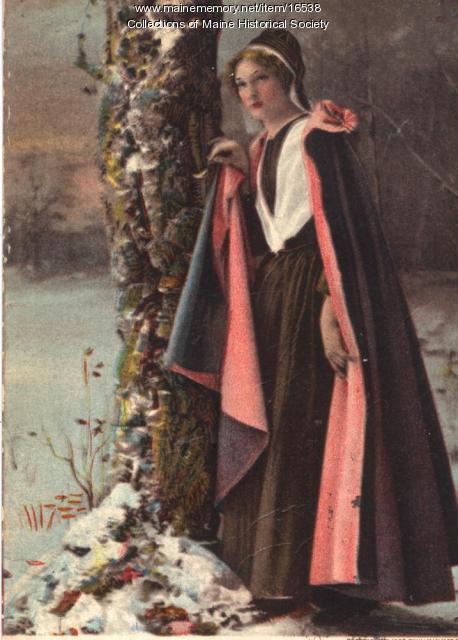Keywords: Love
Item 19031
John Neal on love and happiness, ca. 1815
Contributed by: Maine Historical Society Date: 1815 Location: Baltimore; Portland Media: Ink on paper
Item 105041
Contributed by: Maine Historical Society Date: 1861 Media: Tintype
Item 86356
Love property, Church Road, Cliff Island, Portland, 1924
Owner in 1924: Albert E. Love Use: Shed
Item 37803
178-180 Congress Street, Portland, 1924
Owner in 1924: Catherine Love Use: Dwelling - Three Family
Item 111483
True Love Project interior elevations, Freeport, 1995
Contributed by: Maine Historical Society Date: 1995 Location: Freeport Client: True Love Project Architect: Carol A. Wilson; Carol A. Wilson, Architect
Exhibit
Land Claims, Economic Opportunities?
The landmark 1980 Maine Indian Land Claims Settlement Act provided $81.6 million to Maine Indians for economic development, land purchase and other purposes. The money and increased land holdings, however, have not solved economic and employment issues for Maine Indians.
Exhibit
Drawing Together: Art of the Longfellows
Henry Wadsworth Longfellow is best know as a poet, but he also was accomplished in drawing and music. He shared his love of drawing with most of his siblings. They all shared the frequent activity of drawing and painting with their children. The extended family included many professional as well as amateur artists, and several architects.
Site Page
Western Maine Foothills Region - For The Love Of Paper - Page 1 of 4
"For The Love Of Paper Text by Elliott E. “Bud” Burns, David Gawtry, and Nghia Ha Images provided by The Greater Rumford Area Historical Society…"
Site Page
Western Maine Foothills Region - For The Love Of Paper - Page 2 of 4
"For The Love Of Paper CHANGING OF THE HELM – FATHER TO SON Construction of B Machine at Oxford Paper Company, Rumford, 1915Greater Rumford…"
Story
This Girl Loves Seaweed
by Marianne
Marianne played with seaweed as a child now she collects photos of others with seaweed.
Story
Tammy Ackerman: Falling in love with Biddeford
by Biddeford Cultural & Heritage Center
Someone "from away" who fell in love with Biddeford and contributed to its transformation
Lesson Plan
Portland History: "My Lost Youth" - Longfellow's Portland, Then and Now
Grade Level: 6-8, 9-12
Content Area: English Language Arts, Social Studies
Henry Wadsworth Longfellow loved his boyhood home of Portland, Maine. Born on Fore Street, the family moved to his maternal grandparents' home on Congress Street when Henry was eight months old. While he would go on to Bowdoin College and travel extensively abroad, ultimately living most of his adult years in Cambridge, Massachusetts, he never forgot his beloved Portland.
Years after his childhood, in 1855, he wrote "My Lost Youth" about his undiminished love for and memories of growing up in Portland. This exhibit, using the poem as its focus, will present the Portland of Longfellow's boyhood. In many cases the old photos will be followed by contemporary images of what that site looked like 2004.
Following the exhibit of 68 slides are five suggested lessons that can be adapted for any grade level, 3–12.
Lesson Plan
Longfellow Studies: The Acadian Diaspora - Reading "Evangeline" as a Feminist and Metaphoric Text
Grade Level: 6-8, 9-12
Content Area: English Language Arts, Social Studies
Evangeline, Longfellow's heroine, has long been read as a search for Evangeline's long-lost love, Gabrielle--separated by the British in 1755 at the time of the Grand Derangement, the Acadian Diaspora. The couple comes to find each other late in life and the story ends. Or does it?
Why does Longfellow choose to tell the story of this cultural group with a woman as the protagonist who is a member of a minority culture the Acadians? Does this say something about Longfellow's ability for understanding the misfortunes of others?
Who is Evangeline searching for? Is it Gabriel, or her long-lost land of Acadia? Does the couple represent that which is lost to them, the land of their birth and rebirth? These are some of the thoughts and ideas which permeate Longfellow's text, Evangeline, beyond the tale of two lovers lost to one another. As the documentary, Evangeline's Quest (see below) states: "The Acadians, the only people to celebrate their defeat." They, as a cultural group, are found in the poem and their story is told.



















